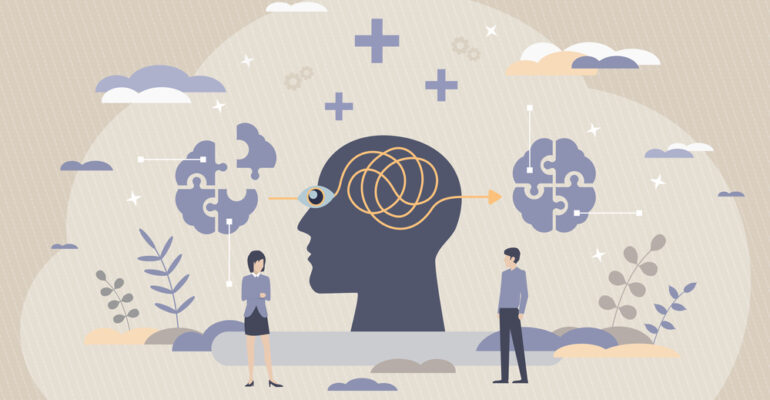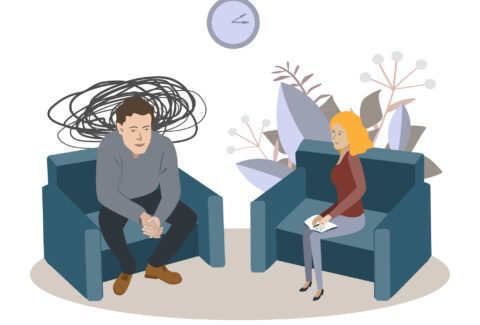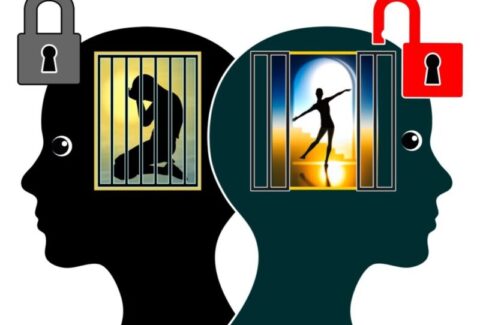Gestalt Therapy and Field Theory: Understanding the Individual in Context

Gestalt Therapy and Field Theory: Understanding the Individual in Context
Gestalt therapy, a profound and dynamic approach to psychotherapy, offers a unique lens through which we can explore human experience and relationships. One of the core principles underlying Gestalt therapy is Field Theory. Field theory views individuals as inseparable from their environment, emphasizing that people can only be fully understood when considered within the context of their interactions with the world around them. This integration of the individual and their environment makes Gestalt therapy a holistic and powerful approach to personal growth, healing, and awareness.
What Is Field Theory?
Field theory[1], originally rooted in the work of physicist Kurt Lewin, was adapted into psychology and Gestalt therapy to explain how individuals exist within a complex web of relationships and environments.[2] It posits that human behavior, thoughts, and feelings are always occurring within a specific context, or “field.” This field includes the social, physical, emotional, and psychological environment in which the individual is embedded.
Unlike traditional psychological models that often view individuals as isolated entities, field theory asserts that people cannot be understood apart from their context. Their thoughts, emotions, and actions are not just influenced by internal factors but by the external world—relationships, societal norms, cultural influences, and situational factors.
In Gestalt therapy, the field is not a static backdrop but a dynamic, ever-changing process. Each person is in constant interaction with their field, and this interaction shapes both the individual and the environment. This is why Gestalt therapists pay close attention not only to what clients are feeling and thinking but also to their environment and the relationships they are navigating.[3]
The Organism-Environment Field
One of the key ideas in field theory is the concept of the organism-environment field.[4] This refers to the reciprocal relationship between the individual (the organism) and their surrounding environment. The individual and the environment are in constant interaction, influencing each other in a continuous loop. In Gestalt therapy, the therapist helps clients understand how they are engaging with their field, exploring how their environment might be affecting their current feelings, thoughts, and behaviors.[5]
For example, someone struggling with anxiety may not only be experiencing internal tension but may also be reacting to pressures from their family, workplace, or cultural expectations. By examining the entire organism-environment field, Gestalt therapy seeks to bring awareness to these dynamics, helping individuals understand how their context is shaping their experience.
This interaction is fluid—people adapt to their environment, and the environment, in turn, adapts to them. Gestalt therapy emphasizes that personal transformation often requires shifting one’s relationship with their field, recognizing how external forces influence internal experiences, and how they, in turn, can influence the external world.
Awareness of the Present Moment
Field theory supports the Gestalt principle of focusing on the “here and now.” By paying attention to what is happening in the present moment—within both the individual and the surrounding environment—people can gain deeper awareness of their behavior and experiences.[6] This emphasis on the present encourages individuals to observe how they interact with their environment in real-time, leading to greater self-awareness and insight.
For example, a Gestalt therapist might explore with a client how they feel in the therapy room, what emotions or sensations arise when talking about a particular topic, and how these experiences might connect to broader environmental influences. Through this process, clients become more aware of their present experience and how their environment is shaping their thoughts and behaviors.
The Influence of the Field on Behavior
Field theory asserts that behavior does not arise in a vacuum; it is the result of an individual’s dynamic interaction with their environment. This means that to fully understand a person’s behavior, we must examine the field in which the behavior occurs. Gestalt therapy explores how certain behaviors or emotional responses are linked to specific environmental factors.[7]
For example, a client might discover that their feelings of anger are not simply an internal issue but are triggered by a toxic work environment or unresolved family dynamics. By bringing awareness to these factors, clients can begin to understand how their field shapes their reactions and can start to make more conscious, intentional choices about how they engage with their environment.
This shift in perspective—understanding behavior as a response to the field—encourages personal responsibility.[8] Rather than feeling trapped by external circumstances, individuals in Gestalt therapy are empowered to change their relationship with their field, altering how they respond to their environment and gaining a sense of agency in their lives.
The Importance of Holism in Field Theory
One of the fundamental tenets of Gestalt therapy is holism—the idea that the whole is greater than the sum of its parts. Field theory complements this by emphasizing that individuals cannot be broken down into separate components; instead, they must be understood as part of a larger system that includes their environment.[9] Gestalt therapy refuses to separate the individual from their world because doing so would fail to capture the complexity and interconnectedness of human experience.
This holistic view encourages therapists and clients to look at the bigger picture, considering the totality of a person’s experience. By doing so, Gestalt therapy helps individuals gain a more comprehensive understanding of themselves and the factors influencing their behavior.
The Therapeutic Relationship as a Field
In Gestalt therapy, the relationship between the therapist and the client is also considered part of the field. The therapist actively engages with the client, recognizing that the therapeutic interaction itself is a dynamic process that shapes both participants. The therapist brings awareness to what is happening in the room, exploring how the client’s experience of the therapist may reflect broader patterns in their life.
This mutual influence allows for rich, meaningful therapeutic work. The client’s thoughts, feelings, and behaviors within the therapeutic relationship offer valuable insights into how they engage with their field outside of therapy. The therapist, aware of their own presence in the field, helps the client navigate these dynamics, fostering personal growth and healing.[10]
Field Theory and Change
Field theory provides a powerful framework for understanding change in Gestalt therapy. Since individuals are in constant interaction with their environment, change occurs when they shift how they relate to their field. This could involve altering their behavior, changing their perception of the environment, or addressing environmental factors that are causing distress.[11]
For instance, a client may realize that their feelings of isolation are linked to their avoidance of social situations. By becoming aware of this dynamic, the client can make intentional changes, such as seeking out supportive relationships or confronting fears that keep them disconnected from others.
In Gestalt therapy, change is seen as a natural outcome of increased awareness. As clients become more aware of their field and how they are engaging with it, they gain the power to make conscious choices that promote growth and well-being.
Conclusion
Gestalt therapy’s integration of field theory offers a profound and holistic approach to understanding human experience. By recognizing the interconnectedness of individuals and their environments, Gestalt therapy empowers people to take ownership of their interactions with the world. This awareness allows for deeper self-understanding, more intentional choices, and the possibility of transformative change.
Field theory reminds us that we are not isolated beings but part of a complex web of relationships, influences, and contexts. By exploring this web and embracing our role within it, we can better navigate life’s challenges and move toward greater fulfillment and personal growth.
[1] Martin, John Levi. “What is field theory?.” American journal of sociology 109.1 (2003): 1-49.
[2] Lewin, Kurt. “Field theory.” (1948).
[3] Francesetti, Gianni, and Jan Roubal. “Field theory in contemporary gestalt therapy, part 1: Modulating the therapist’s presence in clinical practice.” Gestalt Review 24.2 (2020): 113-136.
[4] Corris, Amanda. “Defining the environment in organism–environment systems.” Frontiers in psychology 11 (2020): 1285.
[5] Harris, John Bernard. “A Gestalt perspective on working with group process.” (2001).
[6] Roubal, Jan, and Gianni Francesetti. “Field theory in contemporary gestalt therapy part two: paradoxical theory of change reconsidered.” Gestalt Review 26.1 (2022): 1-33.
[7] Rubenfeld, Frank. “Expanding the field: gestalt therapy and the evolutionary process.” Gestalt Review 12.3 (2008): 295-304.
[8] Evans, Ken. “Living in the 21st century: A Gestalt therapist’s search for a new paradigm.” Gestalt Review 11.3 (2007): 190-203.
[9] Stevenson, Herb. “Holism, Field Theory, Systems Thinking, and Gestalt Consulting: How Each Informs the Other—Part 2, Practical Application.” Gestalt Review 22.2 (2018): 189-207.
[10] Day, Elizabeth. “Field attunement for a strong therapeutic alliance: A perspective from relational Gestalt psychotherapy.” Journal of Humanistic Psychology 56.1 (2016): 77-94.
[11] Roşca, Vlad I. “Implications of Lewin’s field theory on social change.” Proceedings of the International Conference on Business Excellence. Vol. 14. No. 1. 2020.






